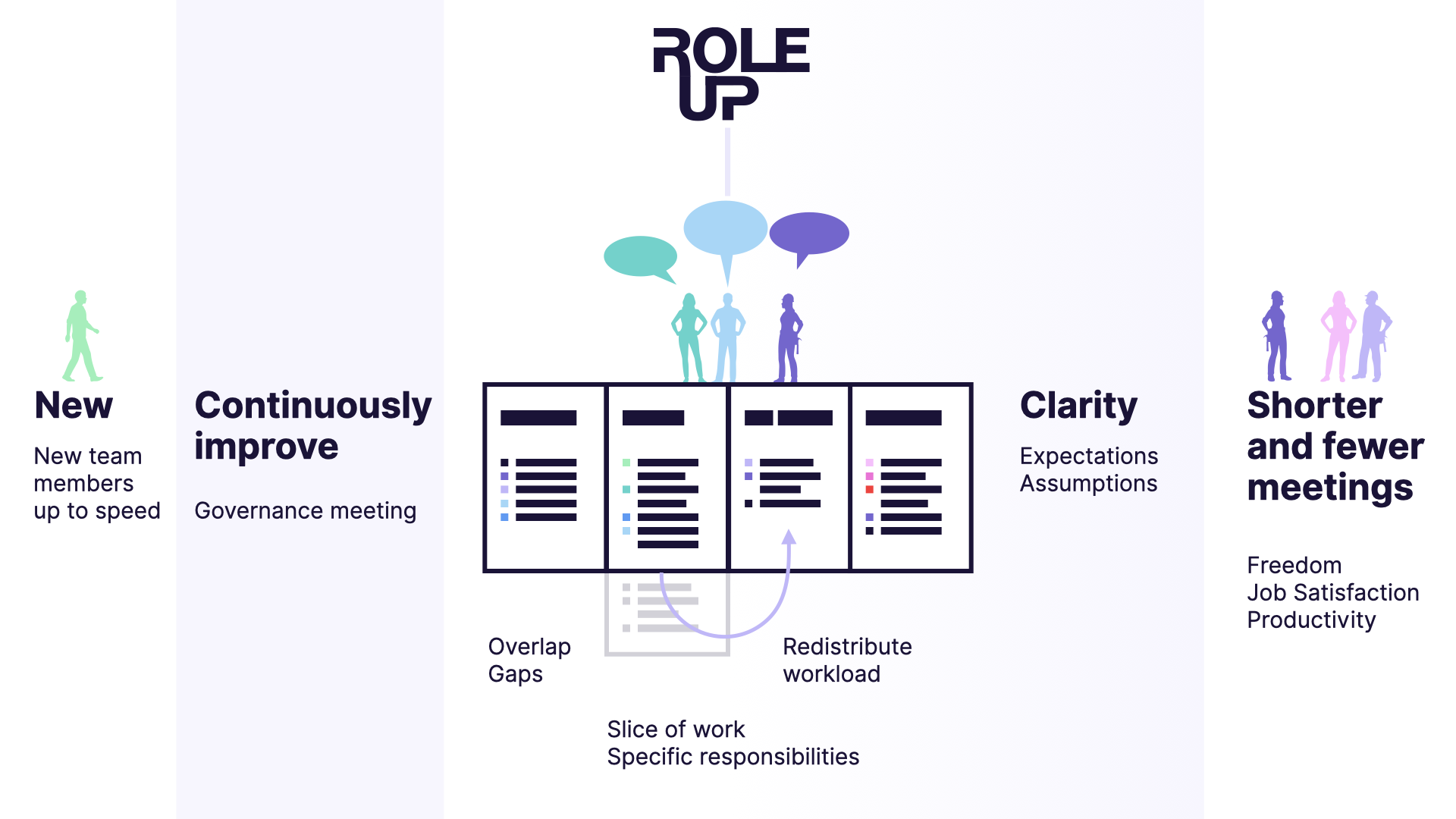Resources
Working with
Roles

Introduction to Working with Roles
A brief introduction to bring you up to speed in 2 minutes. What are Roles? How can you work with Roles? How are they used for self-management in Holacracy and sociocracy, and how can working with Roles benefit your team?
Learn the basics in 2 minutes
Workshop: Start working with Roles
This easy-to-follow guide will help you to organize a workshop for your team. You will create and assign roles and list responsibilities. Open workshop guide
How to run an effective
Governance Meeting
Once your team has defined its Roles and responsibilities, how do you keep them up-to-date? The answer is a recurring governance meeting! Read on to learn what a governance meeting is and how to run one effectively.
Run effective governance meetings

Working with Roles as a team
How can teams use Roles to work better together? What are the benefits of working with Roles for teams? How can working with Roles help your team to reduce friction and irritation, improve communication, have fewer meetings, and deliver more value?
Read about working with Roles as a team
Why every Agile team
should use Role-up

Watch our video about why every team that works agile should use Role-up and experience the advantages of working Role-based.
See why every agile team should use Role-up
Organizations work better with Roles
How can organizations benefit from working with Roles? How can they scale and grow more agile with Roles? How does working with Roles enable companies to distribute decision-making authority and become more resilient? And why is that a good thing for a founder or CEO?
Learn how organizations benefit from Roles
Seven reasons organizations start working with Roles
A growing number of organizations have switched to some form of self-management. This can be Holacracy, sociocracy, or other practices. What makes these companies transition to working with Roles? What frustrations and annoyances motivate this change?
Find out what we discovered
Retrospective: Roles and Responsibilities
Does your scrum team have team members who avoid talking to each other? Is passive-aggressive behavior getting in the way of good teamwork? Are there irritations between team members? This article provides a Role-based sprint retrospective format that helps your team work better together.
Check out the exercise
Get help from a Professional
There are professionals who can help you with setting up Roles, creating robust governance structures, and improving how you work together with your team.
View the list of professionals